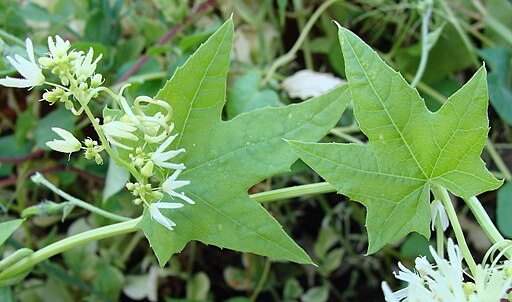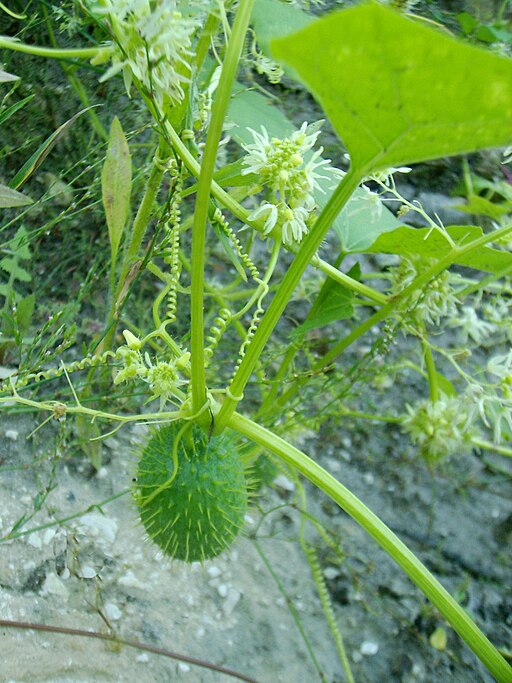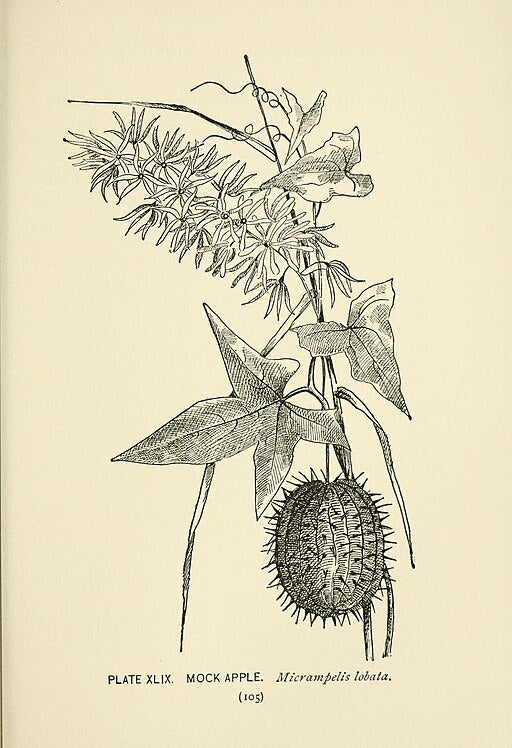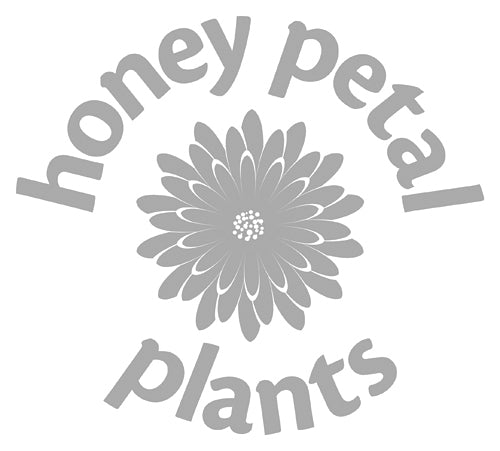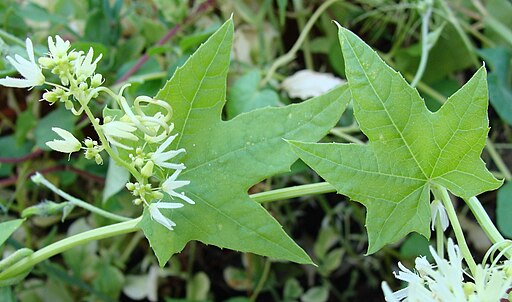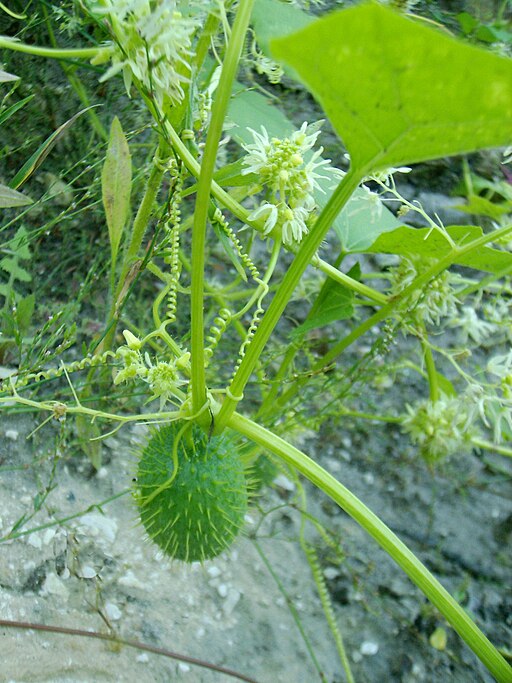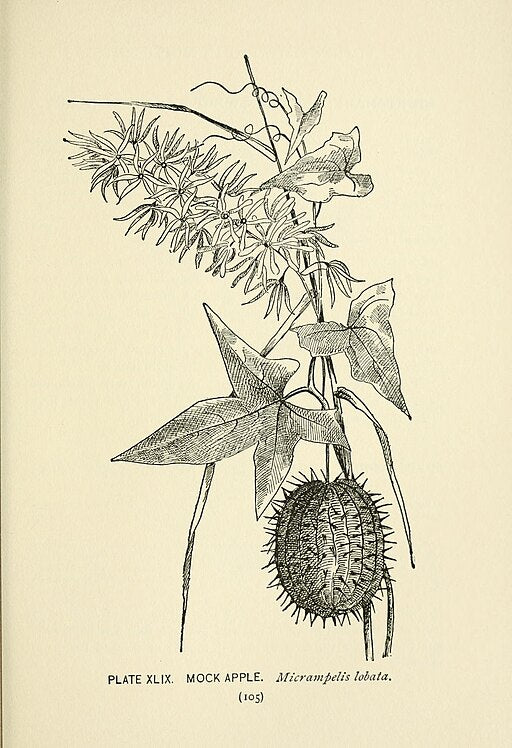Honey Petal Plants
Echinocystis lobata - Wild Cucumber
Echinocystis lobata - Wild Cucumber
Couldn't load pickup availability
Sizes available: HPP quart
Basics: zones 2-9 (there is dispute about this, but it occurs in 40 states including Florida, so the range is probably pretty big), this is an annual vine, can grow up to 25 feet (but more likely about 10-15') in a single season, wants fertile, moist soil in full sun to do its best, but part shade is tolerated. It has fragrant pale ivory flowers (both male and female flowers occur on the same plant - monoecious) during the summer, creates a puffy seedhead covered with little spines, usually containing four large seeds. The leaves are attractive, up to 7" across and maple leaf shaped. The whole plant is charismatic and in a hedge basically hides in plain sight until it blooms. And then you will drive off the road looking at it. Yes, it is a strong grower, but one that is easily pulled out. It plays well with its neighbors and drapes on them, but doesn't smother them. Easy-going, it is a super fun native to plant with children. You are guaranteed success and they will go nuts over the weirdo seedpods just like I do. This plant is not edible. Plant 2-3 feet apart.
Common name: Wild Cucumber, Prickly Cucumber, Balsam-apple (please note, this common name also refers to the extremely toxic Momordica balsamina which is also a member of the Cucumber Family)
Family: Curcubitaceae
Origin/Distribution: Parts of southern Canada south to Florida and west to Texas. Native to Maine
Habitat: moist edges of field, thickets, alongside streams, swamps, roadside ditches.
More: Not edible, attracts pollinators, Excellent trained over an arbor or pergola or along a fence. The root has been used medicinally, however this plant also contains toxic components, so proceed with caution. The seeds can be turned into beads and incorporated into jewelry! See above for my enthusiastic endorsement.
Nursery: Honey Petal Plants from seed collected in Brooks, Maine
Image credits: Wikimedia Commons: leaves and flower; seed pod; drawing by Marian Ellis Ryan Rowan from A Guide to the Wildflowers by Alice Lounsberry, 1899. This guide is in the public domain and is AMAZING.
